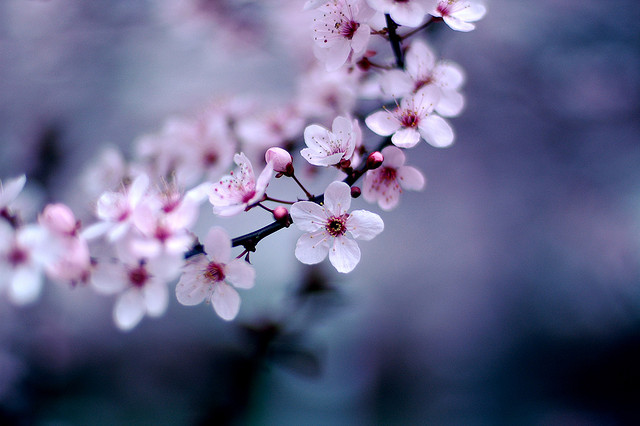
I have fond memories of a song my father sings in Japanese about a cherry blossom, called Sakura Bana. When I recall him singing it, I get goose bumps from the stoic resonance of his gut’s conviction.
In Japan, viewing the cherry blossoms is a centuries-old tradition that lasts for a few weeks at the end of March and beginning of April. Although it’s not in the fall season, for me this represents the microcosm of fall energy.
Symbolically, this tradition in Japan is about letting go of attachment and finding beauty in impermanence. The cherry blossoms typically fall to the ground in full bloom—at the peak of their physical beauty.
For a culture that was heavily influenced by the samurai code of bushido, it means letting go of material attachment and connecting to a purpose that is greater than life itself. This idea allowed young warriors to find beauty in each and every moment when faced with the possibility of death.
Energetically, the season of fall has strong ties to grief.
In traditional Chinese medicine, these emotions and this season also connect with the lungs. The lungs are considered the interface to external environment. We can relate to hearing the emotion of grief in someone’s voice. It is not uncommon to wake up between three and five a.m. when dealing with grief (the time when our circadian rhythms shift focus to the lungs).
Several years ago, I lost my beloved grandmother who helped raise me; however, I didn’t process it at the time.
The energy of grief often expresses itself at first in shock—sometimes an inability to breathe and accept external conditions entering your lungs.
As months passed, I felt a tremendous grief and loss. It was very hard to cultivate purpose, as I felt struck with grief. Eventually, this stagnation became suppressed, and I went through the motions of life but found little meaning.
I was sacrificing the living for the dead, and it felt comfortable.
It wasn’t until I started to do more intensive breath-work—and also casual singing (in the shower)—that I found resolution and was able to wash away the blockage. As my grandmother told me when I was stuck on a problem, just breathe and let it go.
I realized it wasn’t so much the physical loss that caused grief, but the fact that I didn’t properly tell her how much she meant to me before she passed. Having a near-death experience myself, I came to understand how the inability of those still living to let go creates a blockage for the person trying to find peace with the process of death.
I purposefully distanced myself from her so she could pass with more peace. Whether on purpose or coincidence, when we suppress grief it gets stored and takes up space.
While my own process made sense to me and was eventually resolved, everyone processes loss differently. The important thing is to eventually resolve loss and set the attachment free. In much the same way that leaves fall at different times, the process of letting the leaf go is natural for the tree and the leaf.
Unless you let go of someone from the depths of your being, that person still lives in you. It can be very challenging to live your life to the fullest, because your attention is still held somewhere in grief. On a spiritual level, the soul of the deceased can then be released smoothly to continue on its path.
For trees, the fallen leaves create mulch and seeds to replenish their purpose.
Eventually, in learning how to let go, we find beauty in impermanence.
We may not forget the person, but the loss doesn’t hinder the progression of our journey—or theirs.
~
Relephant Read:
Autumn Brings Her Back.
~
Author: Mike Mitsuyuki Ninomiya
Editor: Toby Israel
Photo: Jeff Kubina/Flickr
~
 Share on bsky
Share on bsky

Read 3 comments and reply